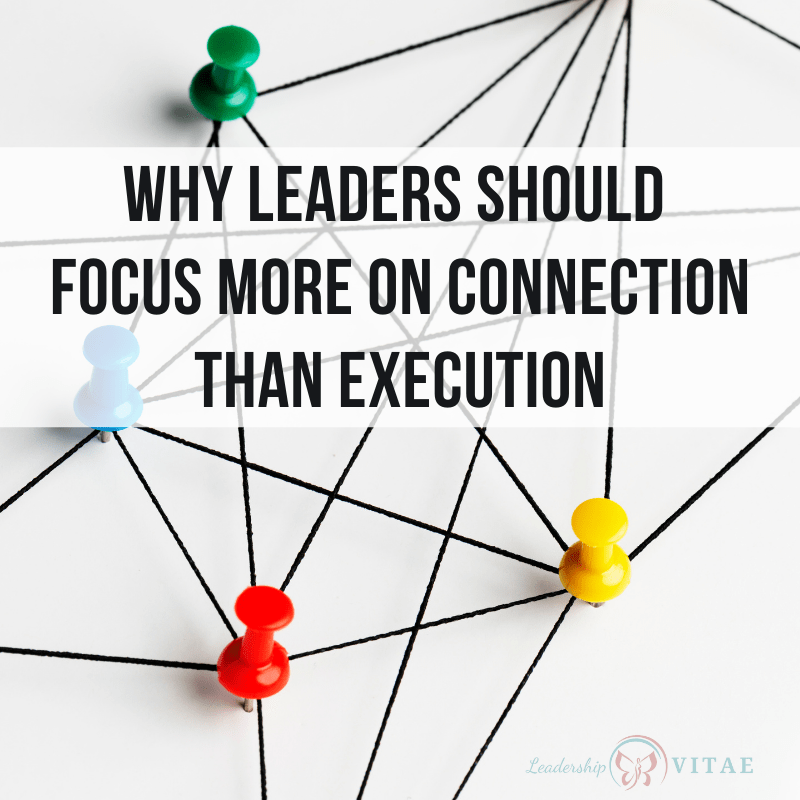
From our earliest measurement, execution seems to be what matters. Our grades in school reflect our ability to deliver. Once we start working, our performance measures tend to be about what we get done.
Objective criteria can be pursued and evaluated, right? Clear KPI’s are what we can be measured against.
But what if the true measure of a leader is not about what we deliver, but our connections? Our relationship capital?
What is relationship capital?
Relationship capital is the investment made in a connection between two people. It is about building trust and connection with others. That same capital can be called upon if either party needs support to move an idea or effort forward or runs into conflict.
When it comes to members of our teams, leaders have a choice in how to engage. Power and position might create resentment or intimidation. Vulnerability and transparency, however, can create a deep connection and trust.
Outside our teams, we can also look to create connection with our customers and partners. For years, I used a Venn diagram as a method to determine where to focus my team’s efforts. Quick wins were those that would create advocacy with customers or partners where high value was created with little effort.
Such delivery would build a bank account of investment, so to speak. When it was time to build high value solutions that required more effort and political capital, those early wins would prove to be invaluable.
Relationship capital is an investment that can be called upon when it’s time to time to deliver something that requires significant effort.
This doesn’t suggest that such relationships are transactional or self-serving. Instead, by focusing on connection and prioritizing the needs of our teams, partners, or customers early, we build relationships that support us when the road ahead is challenging.
Culture as an enabler or inhibitor
An organization’s culture can either encourage or discourage connection, vulnerability, and empathy.
When the focus is only on the work, there can be good results. However, they may happen at the expense of the team.
Belonging results in better outcomes. When team members feel valued for their contributions, they feel energized and want to work harder. A results-focus tends to marginalize the team.
Customers and partners also desire connection.
Years ago, one of my stakeholders commented that I was like a machine. I didn’t create time to know her or allow myself to be known. My only focus was on the work. This prohibited connection and the ability to build trust.
While it is important to deliver on the work, when we have a connection with our customers and team members, we build trust. Trusting relationships result in better outcomes, more benefit of the doubt in times of conflict, and repeat business.
Once I gave time to focus on connection, this allowed trust to be established more quickly. While the outcomes were still successful, they were accelerated when I gave space for that early trust building as a foundation.
Build connection, whether encouraged or not
Belonging and connection have not been modeled in most of my roles and organizations. Team members have been valued for what they can do, but rarely felt seen, known, or valued.
While connection wasn’t modeled, I did my part to create it within my team. I began one on one, embracing vulnerability to build trust at an individual level. Over time, I learned from my mistakes and expanded to small and then larger groups.
Eventually, a focus on transparency and connection became second nature. Now it feels strange not to be open, up down and around.
By focusing on connection, execution becomes easier. When trust is present, the team is more likely to engage and elevate issues early on. Partners bring us in when challenges arise and talk openly about them. Customers appreciate transparency and come back for repeat business.
When we focus on the results, how we get there may be questionable. Instead, being laser focused on connection puts trust at the forefront. Knowing our people, partners, and customers prioritizes belonging and having their needs met.
By putting connection first, execution becomes infinity easier. And more likely to achieve success.
Do you find connection with customers, partners, and team members to be a key element of success? How so? What do you do to improve connection? Please share your thoughts in the comments below.








